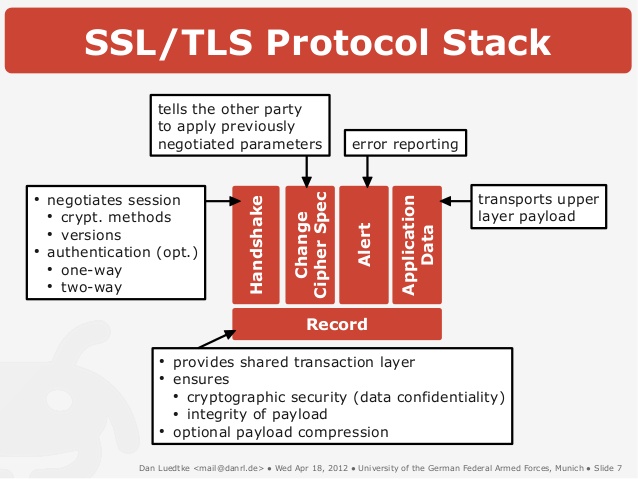The evolution of the Internet has necessitated enhancements in security, with Transport Layer Security (TLS) and its predecessor, Secure Sockets Layer (SSL), playing pivotal roles in safeguarding data across networks. To effectively engage these cryptographic protocols, one must understand their precise function within the OSI model, a conceptual framework delineating the processes involved in network communication. This article delineates how to appropriately deploy TLS and SSL within the OSI layers, emphasizing their operational attributes and the potential for a paradigm shift in secure communications.
The OSI model, which stands for Open Systems Interconnection model, comprises seven layers: Physical, Data Link, Network, Transport, Session, Presentation, and Application. TLS and SSL fundamentally intertwine with the Transport and Application layers, each ensuring secure data transport while safeguarding sensitive information against malicious entities.
To grasp the utility of TLS and SSL, one must first comprehend the distinct roles of the Transport and Application layers. The Transport layer (Layer 4) is primarily responsible for end-to-end communication between hosts, ensuring the integrity and reliability of data transmission through protocols such as TCP (Transmission Control Protocol). Meanwhile, the Application layer (Layer 7) interacts directly with end-user applications, facilitating user interfaces and data exchange between software applications.
At their core, TLS and SSL integrate with the Transport layer to provide secure communication channels over potentially unsecured mediums, typically the Internet. Their primary function at this level involves encrypting data packets before transmission, thus mitigating the risk of interception. This encapsulation occurs through a handshake process, a series of exchanges that establish a secure session between client and server. During this handshake, cryptographic algorithms are negotiated, ensuring that the communicated information remains shielded from eavesdroppers.
However, the mere interaction with the Transport layer is insufficient. To appreciate the overarching effectiveness of TLS and SSL, one must consider their implications at the Application layer. While the Transport layer guarantees that data travels securely from point A to point B, the Application layer fortifies the actual content being exchanged. For instance, when a user submits a credit card on an e-commerce platform, TLS or SSL encrypts not just the connection but also the data itself, ensuring that sensitive information does not become fodder for prying eyes.
Understanding the orchestration between these layers can catalyze a broader recognition of how to leverage TLS and SSL effectively. One promising approach is the deployment of application-layer gateways, which allow for granular control over security protocols. By implementing these gateways, organizations can enforce TLS/SSL usage across diverse applications and services, preempting vulnerability exploits stemming from outdated or misconfigured software.
Moving on, a critical consideration is the balance between security and performance. While TLS and SSL enhance data integrity, the computational overhead associated with encryption and decryption processes can introduce latency. Thus, employing these protocols optimally is essential. This might involve adopting newer versions of TLS, which provide enhanced performance without sacrificing security, coupled with hardware acceleration techniques that ease the encryption burden on servers.
Moreover, organizations must regularly update their cryptographic practices to counter novel security threats. The algorithms underpinning TLS and SSL must evolve to meet contemporary challenges. This includes moving away from deprecated standards, such as SSL 3.0, in favor of the more robust TLS 1.2 and 1.3, which yield not only increased efficiency but also fortified security guarantees.
Furthermore, establishing rigorous key management policies is imperative. The efficacy of TLS and SSL hinges on the strength of the encryption keys employed. Connection-based encryption can only be as strong as the keys that manage it; neglecting this aspect can lead to compromised security, undermining the entire effort to safeguard data integrity.
Subsequently, organizations need to cultivate a culture of security awareness among stakeholders. Training sessions can illuminate the importance of maintaining compliance with established cryptographic protocols, thereby encouraging responsible behaviors such as using strong passwords and recognizing phishing attempts. This aspect cannot be overstated; a well-informed team is one of the most formidable barriers against data breaches.
Finally, utilizing analytics and monitoring tools can further bolster security postures surrounding TLS and SSL. By consistently assessing encryption effectiveness and monitoring for anomalous activity, organizations can stay ahead of potential threats. This proactive stance not only anticipates security breaches but also provides valuable insights into user behaviors, serving as a catalyst for continuous improvement in security practices.
In conclusion, understanding how to leverage TLS and SSL within the appropriate OSI layers transforms the conversation around data security. By appreciating the nuances of Layer 4 and Layer 7, organizations can implement comprehensive strategies that safeguard data effectively while promoting a robust security framework. In recognizing TLS and SSL as not merely protocols, but critical components of secure communications, one can forge a more secure digital landscape, steering towards a future where information integrity remains inviolable.









Leave a Comment